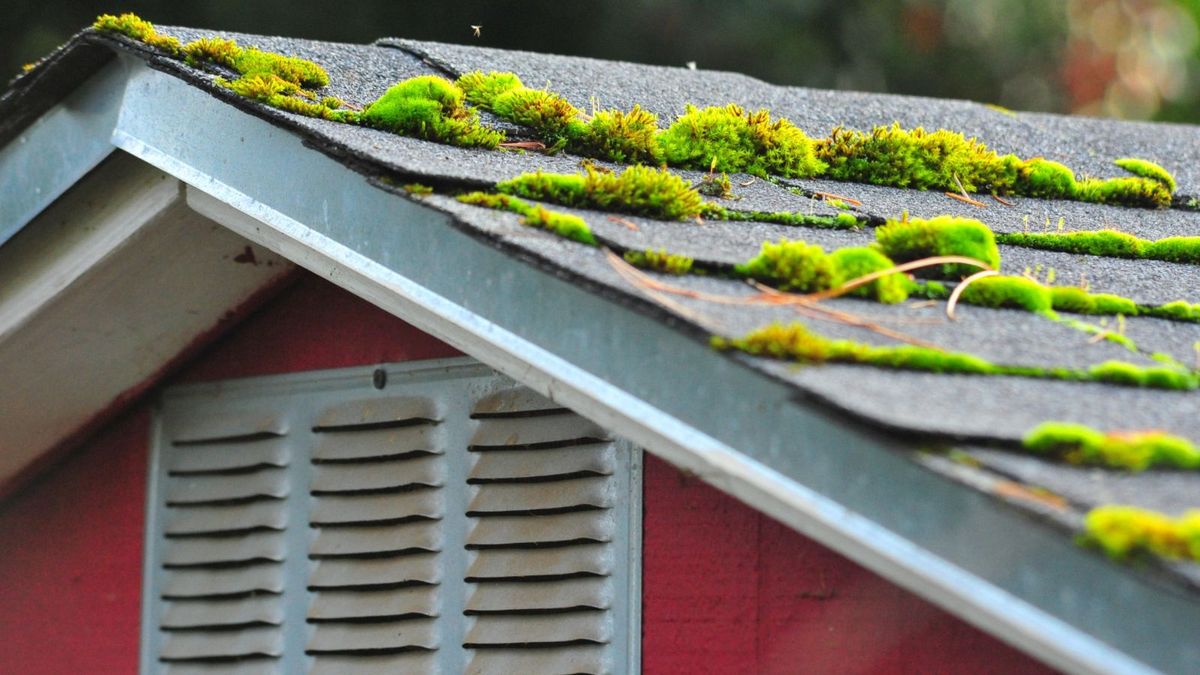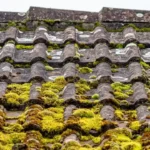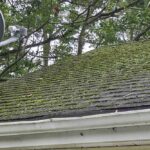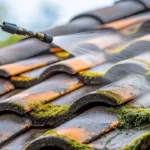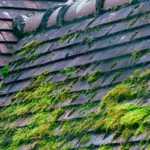Living in the countryside can be a dream come true for many. However, it comes with its unique set of challenges. One such challenge is dealing with roof moss, a common issue for rural homes. Roof moss rural home problems can lead to costly repairs if not addressed promptly.

Understanding Roof Moss
Roof moss thrives in damp, shaded areas, which are often found in rural locations. It can grow quickly and cover large sections of a roof if left unchecked. But why is it a problem?
Why Roof Moss is Problematic
Moss can retain moisture against the roof surface, leading to decay and damage over time. This can compromise the integrity of your roofing materials, leading to leaks and even structural damage.
Identifying Roof Moss Problems
Early detection is key. Look for green patches on your roof, especially in shaded areas. If you notice moss, it’s essential to act quickly to prevent further damage.
Impact on Roof Longevity
Moss can significantly reduce the lifespan of your roof. By holding moisture, it accelerates the wear and tear of roofing materials.
Addressing Roof Moss: Solutions and Prevention
Dealing with roof moss in rural homes requires a proactive approach. Heres what you can do:
Regular Maintenance
Schedule regular roof inspections to catch moss growth early. This can be done alongside other home maintenance tasks.
Professional Cleaning
Consider hiring a professional to clean your roof. They have the right tools and expertise to remove moss without damaging your roofing materials. For more insights on professional cleaning, visit Abbey Roofing.
DIY Methods for Moss Removal
For those who prefer a hands-on approach, there are several DIY methods available. However, its important to follow best practices to avoid damaging your roof.
Using a Moss Killer
Apply a moss killer that is safe for roofing materials. This can effectively kill moss, preventing it from returning for a while.
Manual Removal
Use a long-handled brush to gently remove moss from your roof. Be careful not to damage the shingles or tiles.
Preventing Future Moss Growth
Prevention is better than cure. Here are some tips to keep moss at bay:
Trimming Overhanging Branches
Ensure that tree branches do not cast too much shade on your roof, as sunlight helps to keep moss growth in check.
Improving Roof Ventilation
Good ventilation can reduce moisture buildup, making your roof less hospitable to moss.
Choosing the Right Roofing Materials
Some materials are more resistant to moss growth. Consider investing in moss-resistant shingles when replacing your roof.
Material Options
Metal and slate roofs are less prone to moss growth. They can be a good investment for long-term prevention.
Cost Implications of Roof Moss
The cost of addressing roof moss rural home problems can vary. Heres what to expect:
Professional Services
Hiring professionals can be costly, but it is often worth the investment to ensure the job is done correctly.
DIY Costs
While DIY methods can save money, they require time and effort. Ensure you have the necessary tools and products before starting.
Environmental Impact of Moss Removal
Consider the environmental impact of the products you use. Opt for eco-friendly solutions whenever possible.
Eco-Friendly Products
There are many environmentally friendly moss killers available. These are less harmful to the surrounding ecosystem.
When to Replace Your Roof
If moss has caused significant damage, it might be time to replace your roof. Heres how to know:
Signs of Severe Damage
Look for signs like persistent leaks, sagging roof sections, or extensive moss growth that cannot be controlled.
Conclusion
Addressing roof moss rural home problems is crucial for maintaining the integrity and longevity of your home. By taking proactive measures, you can prevent costly repairs and ensure a safe and comfortable living environment.

FAQs
What causes moss to grow on roofs?
Moss grows on roofs primarily due to moisture and shade. Rural homes with lots of trees and less sunlight are more prone to moss growth.
Can moss damage my roof?
Yes, moss can damage your roof by retaining moisture against the roof surface, leading to decay and structural issues over time.
How often should I check my roof for moss?
Its advisable to inspect your roof at least twice a year, ideally during spring and fall, to check for moss and other issues.
This article contains affiliate links. We may earn a commission at no extra cost to you.



